Beans, beans good for the heart, the more you eat the more you fart…
Sad but true, eating beans can lead to unpleasant side effects like gas and bloating, but why do beans give you gas? And is there a way to stop gas after eating beans?
First, a little about intestinal gas…
We all pass gas many times a day (around 20 times! [1]), it’s a natural part of digestion, so there should be no shame in it! It’s made up of hydrogen, nitrogen and carbon dioxide – these are all odourless. In about 1/3 of people methane is also produced – we don’t yet fully understand why! Some bacteria also produce sulphur as a by-product, which is the smelly stuff! This smelly gas is more likely to be produced by eating foods with high levels of sulfuric compounds like cruciferous veg (cabbage, broccoli, sprouts, cauliflower) as well as the onion family, asparagus, mushrooms, corn, cucumbers and some root veg (sweet potatoes, parsnip, turnip, Jerusalem artichokes). These veg are also known as the FODMAP veg and some people with gut issues are recommended to avoid them, at least in large quantities.
If you eat a lot of fibre, you will likely produce more gas. This does not mean that you should avoid fibre though!! It’s already a nutrient that many of us don’t get enough of and is essential for …
Issues come when we get a build up that causes discomfort, unpleasant smells or some with volume in social situations…

Why do beans give you gas?
Beans have lots of lovely complex carbohydrates, which are great for giving a steady energy release. Unfortunately, they contain a resistant starch, like fibre, which is not easily digestible. This is the main value of fibres; they carry food through the gut and are usually eaten by the bacteria in our intestines.
If you have a typically low fibre diet and then start to eat a lot of fibre, your body will not be used to it, and populations of the bacteria’s feeding on these fibres will likely be low. This can mess up your digestion and cause discomfort.
Why do they also affect people who eat fibre? Because of the oligosaccharides (another form of carbohydrate). These can also be difficult to digest, and are large molecules, meaning that they often make it to the large intestine. Bacteria in the large intestine will finally feed off the remaining sugars, which causes fermentation and the production of gas.
Did you know that when stressed, your digestion is often negatively affected, so more undigested food enters the large intestine and is digested by bacteria causing gas! [2]
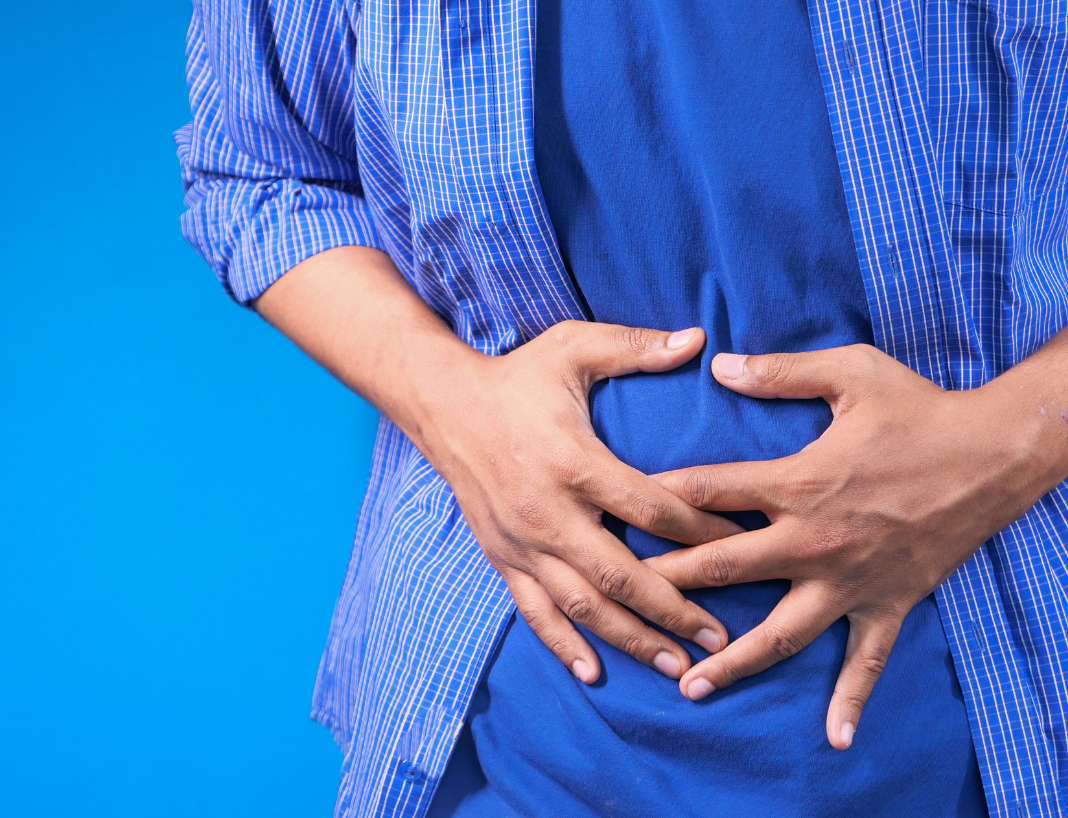
Why should we try to include beans rather than avoiding them altogether?
Not only are they very versatile, beans are a good source of proteins as a meat alternative, have lots of lovely complex carbs for energy and come with a lovely package of nutrients like fibre and protein, along with loads of folate, manganese and B vitamins. Beans can also help reduce your risk of conditions like cancer, high blood pressure and heart disease.
Beans are also cheap, so can really help you to eat healthy on a budget.
The fibre will keep you fuller for longer, feed the bacteria that produce B12 for us, help us excrete waste and regulate bowel action.
Most beans actually have a pretty similar nutrition profile, with around 70-75% of their calories from carbs, 22-30% from protein and 0-4% fat. Are any healthier than the others?
- Cannellini, flageolet, northern, borlotti, black-eyed, red kidney have a slightly higher amount of protein. Soy top them all though with double the amount!
- Chickpeas have over double the fats (healthy polyunsaturated fats).
- Kidney beans are very fibrous.
- The most nutrient dense bean is the northern bean, followed closely by the Navy/Haricot bean and the mung bean.
- Chickpeas are the least nutrient dense.
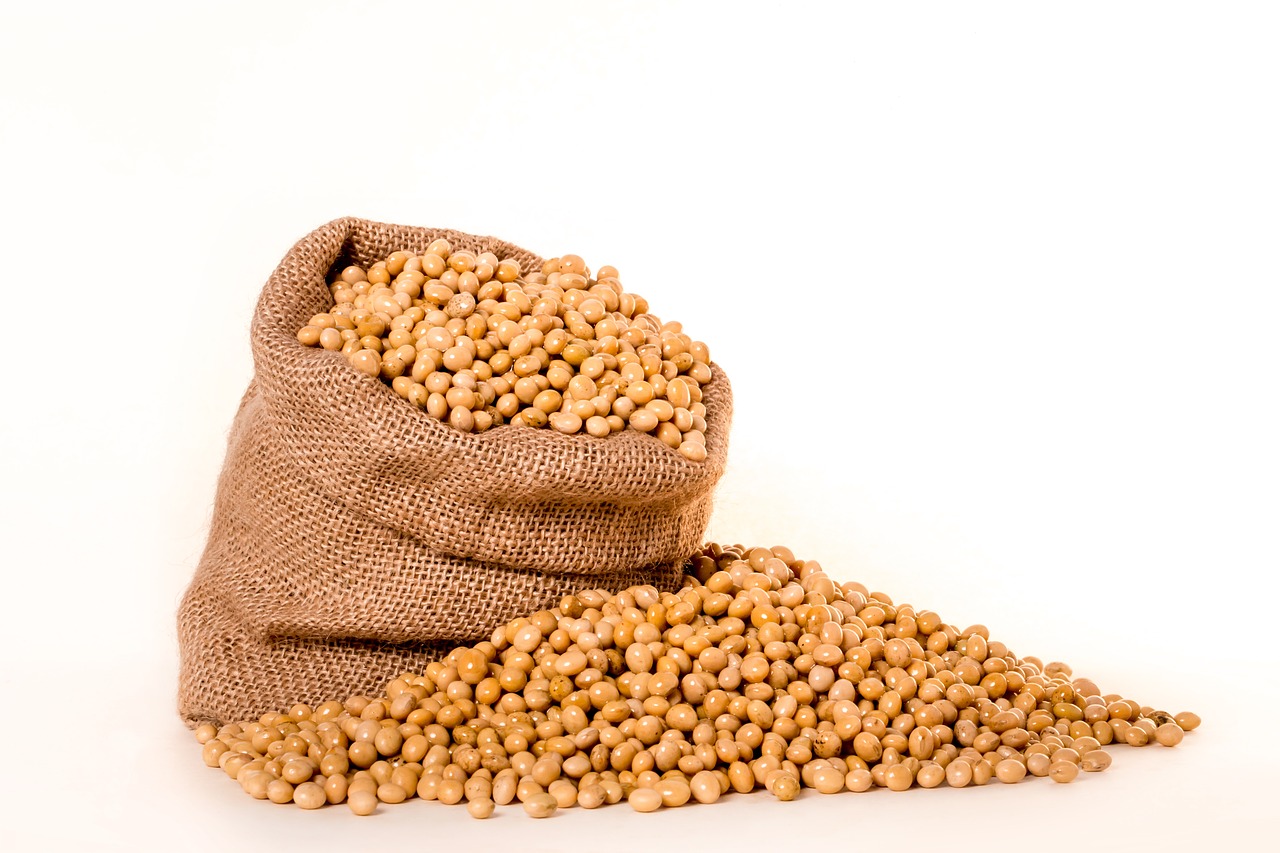
9 ways to stop gas after eating beans
#1 - Build up your beans
Add beans in slowly to give your gut a chance to adapt, especially if you’re new to eating beans (other than baked beans!). Keep the portions small too initially. Over a few weeks, build up the volumes and you should experience far less gas as your gut bacteria get used to the new food.
#2 - Cook your beans
Cooking your beans until they are super soft will help to decrease gas as this removes the oligosaccharides, or starts to break them down, so less undigested pieces will reach the gut bacteria.
#3 - Soak and rinse beans
Instructions often say to soak overnight, but soak them for up to 48 hours. An added tbsp of vinegar in the water can also help, as can changing the water a few times [6]. Using hot water can speed the process too.
Soaking can reduce the amount of oligosaccharides in them. Cook the soaked beans in fresh water (not the water they have been soaked in!)
Make sure that canned beans are rinsed well.
Note that a slow cooker does not get to a high enough temperature to remove any toxins from some dried beans – so only use canned beans in the slow cooker.
#4 - Vary your beans
You may find that you can cope with certain beans better than others, so if you can’t seem to agree with one, try others to see which one you tolerate best. There are two different types of the oligosaccharides in beans, and you may find that it’s only one of them that causes you issues. Experiment!
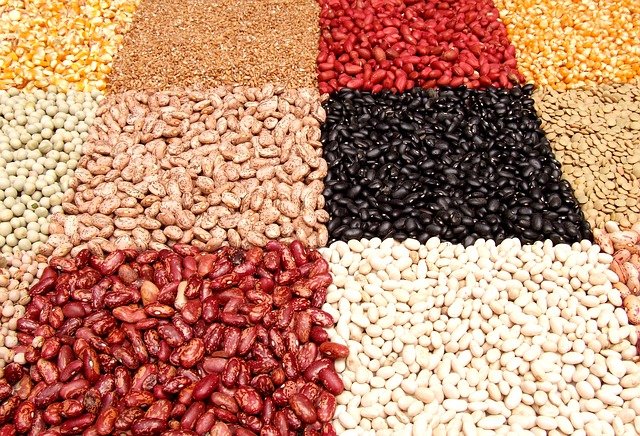
#5 - Reduce your stress levels, especially around meals
Stress causes the ‘fight or flight’ response, so blood is diverted from the gut, and more undigested food passes into the large intestine, causing gas. Reduce this and you may not notice the effects of the beans as much! [2] One of my favourite ways to relax before food is to take some deep breaths and relax your muscles on the outbreath.
#6 - Try some spice
Adding a large pinch of fennel seeds or freshly grated ginger 5 minutes before the end of cooking has been reported to make a big difference – worth a try!
#7 - Chew your food properly
If your foods are well broken down through chewing before they enter your stomach, there’s a greater chance of them being broken down enough to allow full digestion. This should reduce the undigested oligosaccharides entering your large intestine.
#8 - Improve your intestinal environment with probiotics
Bloating, gut pains and smelly flatulence can indicate an imbalance in the gut flora. Your gut bacteria can be either very helpful to your health, or quite destructive to it! Probiotics can help to repopulate your gut with healthy bacteria.
#9 - Don't drink too much with your meal
Drinking a lot of liquid with your food dilutes your stomach acid and can slow digestion, causing more gut discomfort. If less digestion occurs, more foods will pass into the large intestine and get digested by the microbiome, causing gas.
The exceptions are gut soothing teas like fennel, peppermint or ginger tea.
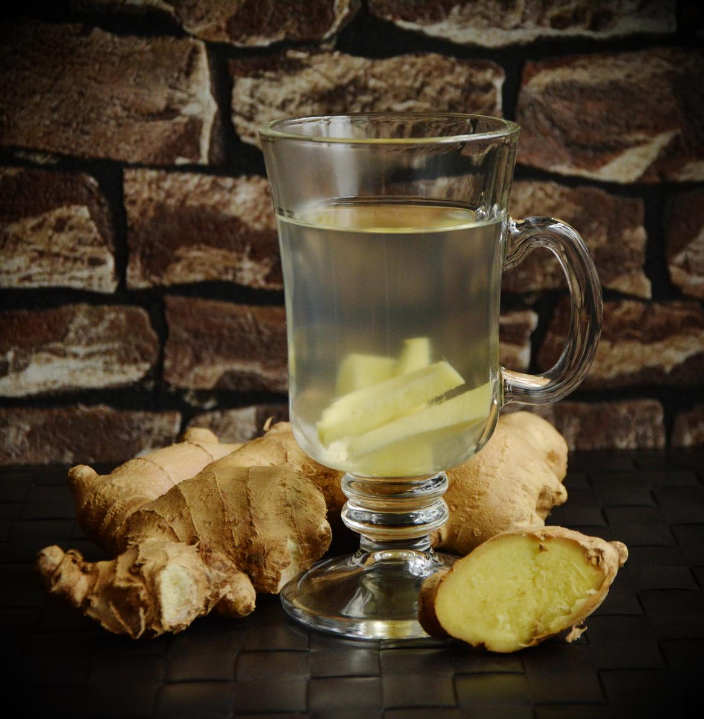
Which are the healthiest and most eco-friendly – canned or dried beans?
There are a few differences betwen canned and dried:
Arguements for dried:
– much cheaper. Although canned beans are not expensive compared to other protein sources…
– should have less additives and preservatives (although some canned have very few – check the can)
– can be cooked to your desired texture and generally taste fresher.
– appear to have a better nutrition profile to canned beans, maintaining more of some minerals.
– shipping beans in their dried form reduces their transport footprint
– plastic packaging requires less energy to produce
Arguements for canned:
– canned are so much more convenient with less prep and shorter cooking times.
– are reputed to have less gas, due to the canning process [5] and being soaked in liquid for a long time.
– cans are recyclable (wheras bean packaging rarely is)
– boiling beans on a stove for hours is not very eco-friendly, much less efficient than the commercial heaters (perhaps 11 times), so canned beans are cooked more efficiently. (If you cook with green energy though, the effect is reduced…)
As you can see, there is no clear winner.
If you have time, dried beans are likely to be the healthier choice.
For an eco choice it will largely depend on whether your main aim is to reduce emissions or plastic. If you can buy your beans without packaging and cook with green energy, that’s likely to be better overall.
Canned beans or dried beans – which are better and more eco-friendly?
There are a few differences betwen canned and dried:
Arguments for dried:
– much cheaper (although canned beans aren’t expensive, especially compared to other protein sources)
– likely to have less additives and preservatives (although some cans are not too bad – check the ingredients)
– you can cook them to your desired consistency/texture and they tend to have a fresher taste
– appear to have a better nutrition profile to canned beans, maintaining more of some minerals.
– transport of the much heavier canned beans will have higher emissions.
– making cans requires a lot more energy than plastic packaging.
Arguments for canned:
– much more convenient in terms of prep and cook time.
– better for gassiness due the canning process and being soaked in liquid for a longer time [5].
– cans are recyclable, plastic packaging is generally not (yet).
– boiling beans on a stove for hours is also not very eco-friendly, much less efficient than commercial cookers (perhaps 11 times). This will be partly negated by cooking using green energy.
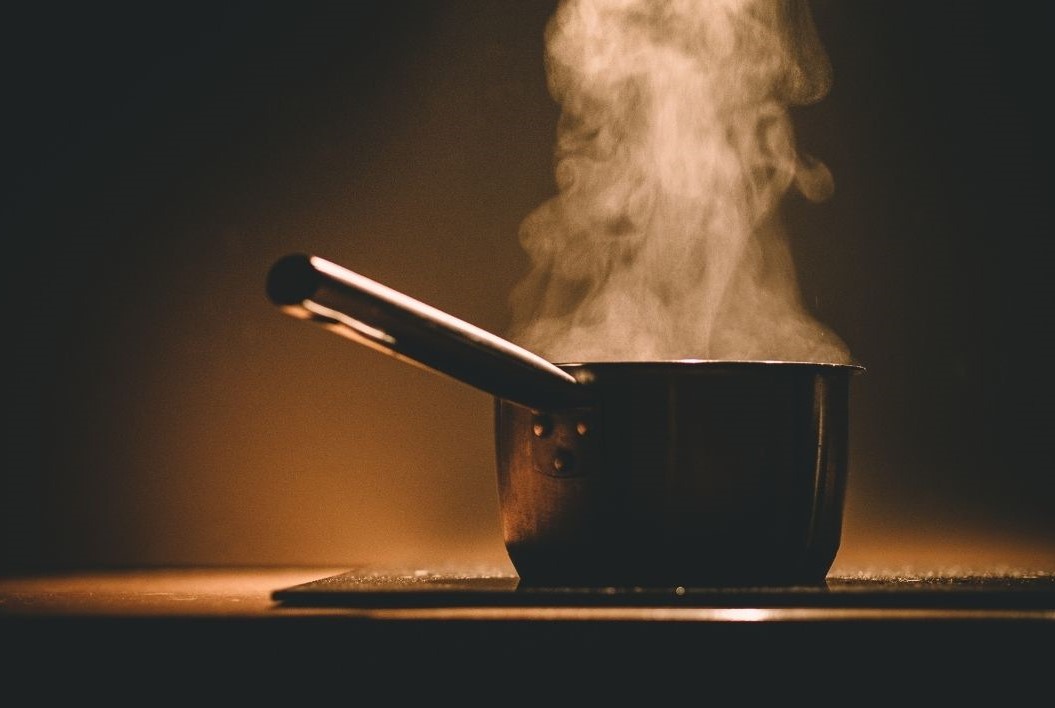
There is no clear winner.
If you have time, dried beans are likely to be the healthier choice.
For an eco choice it will largely depend on whether your main aim is to reduce emissions or plastic. If you can buy your beans without packaging and cook with green energy, that’s likely to be better overall.
So as you can see, beans are an important part of our diet, providing taste and texture to meals, and a healthy dose of nutrients and fibre. They are also a good source of plant proteins, so will be especially important as we move towards a reduction in meat.
Building more beans into your life…
Beans are great in salads, soups, and as snacks. There are so many types, you’re sure to be able to find a variety that you love and a bean for every occasion!
Red Kidney Beans
Under cooked red kidney beans are toxic – so make sure these guys are well cooked. Great for colon health, and one of the best beans for vitamins C and K, and potassium. These guys have a nice soft texture, but don’t disintegrate, bring colour to a dish and go really well with Mexican spices, like in a chilli. Also go well with rice.
Soy / Edamame Beans
A controversial bean used in many products. It can interfere with oestrogen levels, usually for the good, but sometimes in a detrimental way. Research on this is ongoing. Soybeans have a very different nutrition profile to other beans. One of the best beans for vitamins B2, C, E and K, and copper, iron, magnesium and phosphorus. Also packed with antioxidants which are associated with a reduced risk of cancer. Great for mixing into salads and pasta. Also used in many other vegan foods and alternatives in various forms.
Black Beans
Great for heart health, strong healthy hair, clear complexion, best for your bones and decrease blood pressure. Brilliant with chicken and rice, they can even be used in baking- seriously – I make some love black bean cookies which have a lovely dark colour thanks to the beans. My daughter reckons they may be better than chocolate digestives!!) Check out the recipe here…
Cannellini Beans
Sometimes called white beans. They are often included in soups, stews and pastas with their hearty and earthy flavour. They hold their form well, rather than breaking up so are good in soups and stews. An excellent bean for calcium, iron, magnesium and potassium.
Flageolet / Fayot Beans
Small, tender and creamy with a mild flavour. Often used in French cooking in salads, soups and side dishes. They have a thin skin so can be easier to digest than other beans. A great source of selenium, copper, iron, manganese and B vitamins, which are essential in energy pathways.
Pinto Beans
These are what refried beans are made of – and popular in Mexican cooking. Very popular in the US, but less so here in the UK. A bean high in vitamins B6 and C, and selenium.
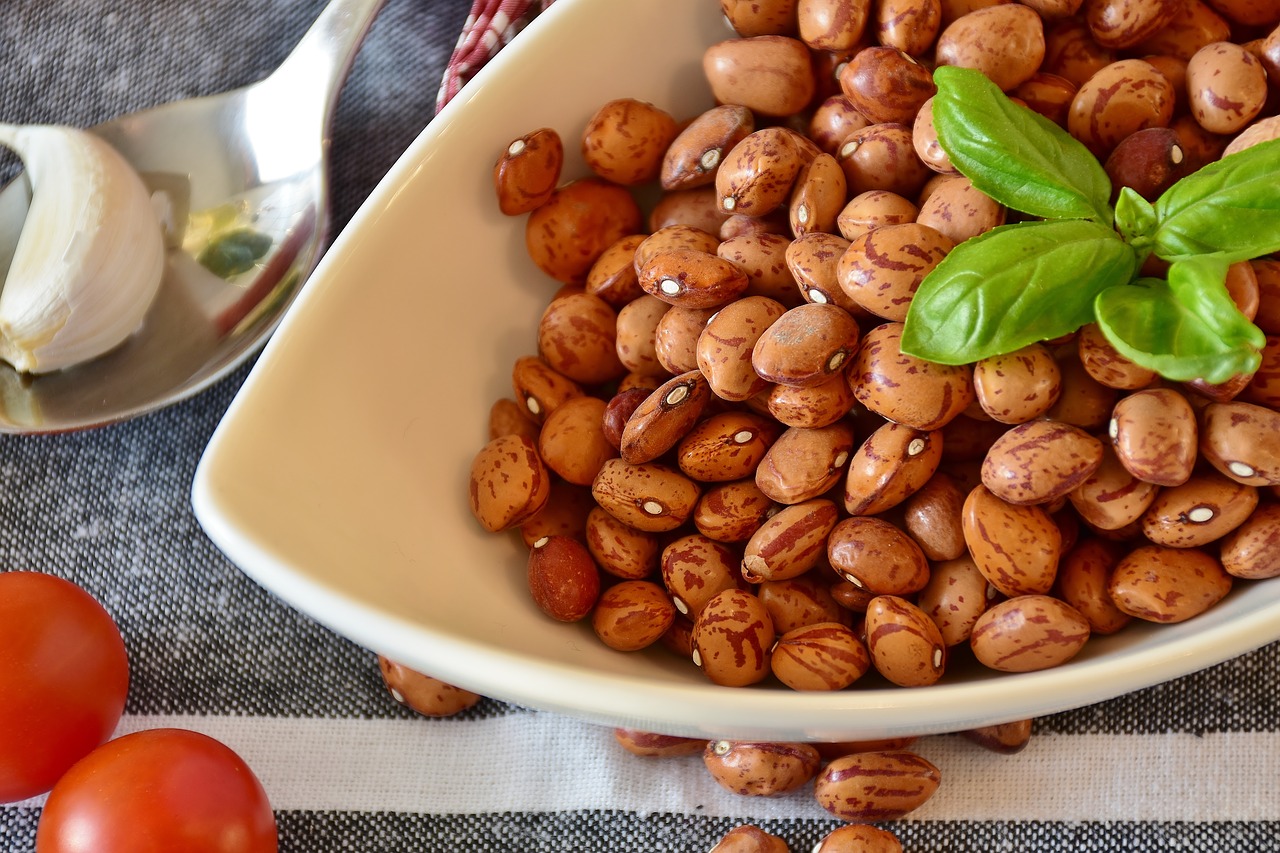
Chickpeas / Garbanzo Beans
The main ingredient of hummus. They are high in vitamins B6 and E as well as having a huge amount more Manganese than other beans. Manganese is great for the nervous system. Great in salads or curries. Roasted chickpeas also make a great snack.
Butter / Lima Beans
Don’t consume raw or they contain cyanide! These beans have a mid flavour themselves, and hold other flavours well. They have a creamy texture like potato, so can be mashed and served as a potato alternative, or mixed into potato for more protein. Also a great bean for vitamins B6 and E and potassium.
Black-eyed beans / peas
One of the best beans for vitamin B1 and potassium. Pair with smokey meats or citrusy salads. They are quite dense with a firm texture like chickpeas.
Red / Adzuki Beans
These beans look very similar to red kidney beans. They are used in similar ways and team well with rice. Adzuki beans are a very rich source of antioxidants, and are also high in vitamins B3 and B9 and zinc. Like kidney beans, they are toxic uncooked. Used in Caribbean, Latin and Cajun recipes – soups, chilli’s, and rice dishes. They taste slightly sweet, and a little nutty. Also go well with mushrooms and sweet potatoes.
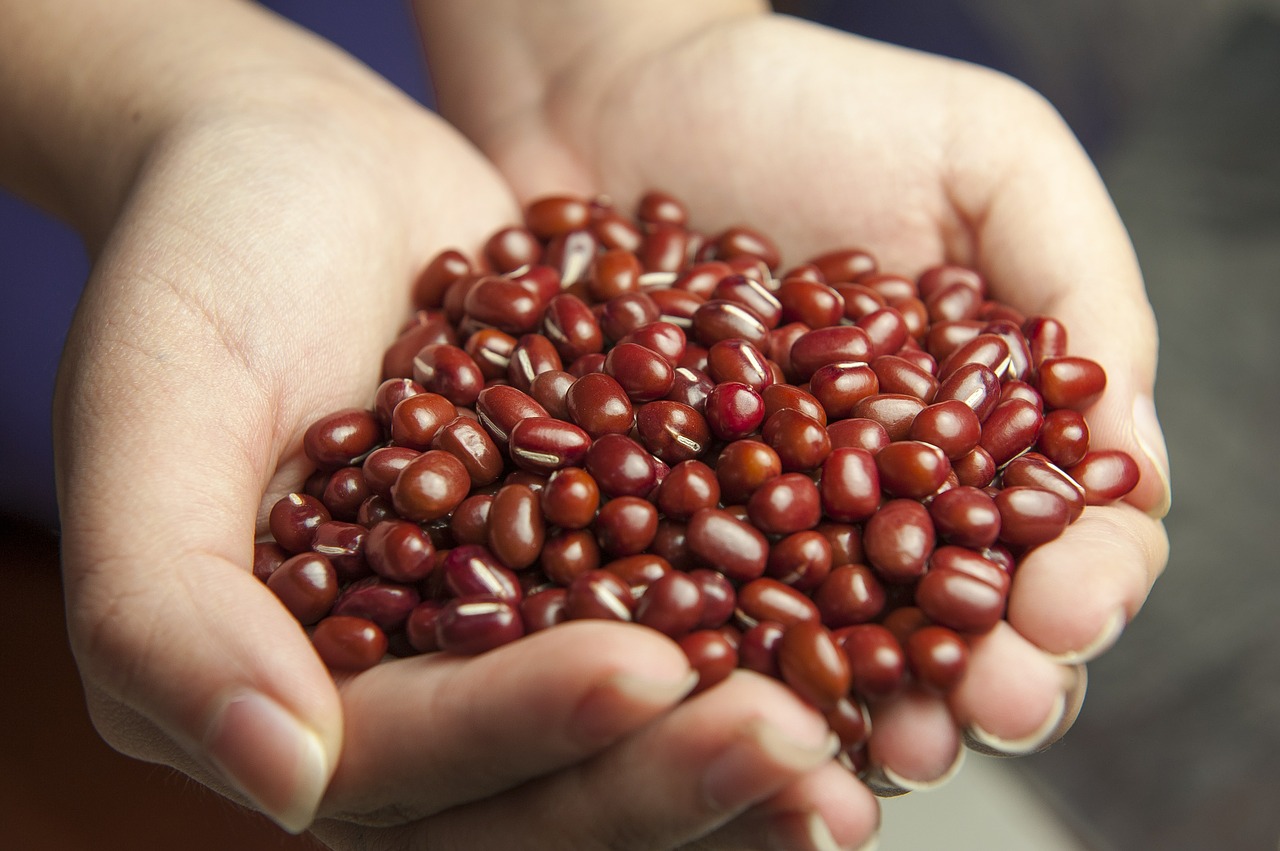
Borlotti / Cranberry Beans
These beans have a mild nutty flavour and a firm texture. Often used in Italian cooking. They are high in vitamin B9.
Northern Beans
Not really used in the UK, but known by Americans. Another mild white bean, one of the best beans for vitamin C, Magnesium and Potassium.
Navy / Haricot Beans
One of the smallest beans and very mild in flavour. These beans are the ones used in baked beans. They have a creamy texture and go well in pasta dishes and salads.
Mung Beans
A very versatile bean often eaten in salads, soups, stir fries and curries. Have a slightly sweet taste so may be used in desserts. You may have seen them sold as sprouted versions. One of the best plant based sources of protein, with a number of the essential amino acids that we cannot produce. They contain a lot of antioxidants especially when sprouted (6x more!). Mung beans are believed to be anti-inflammatory and help protect against heat stroke, high body temperature and thirst. A great bean for vitamin A, B5, B9, C and E as well as Magnesium.
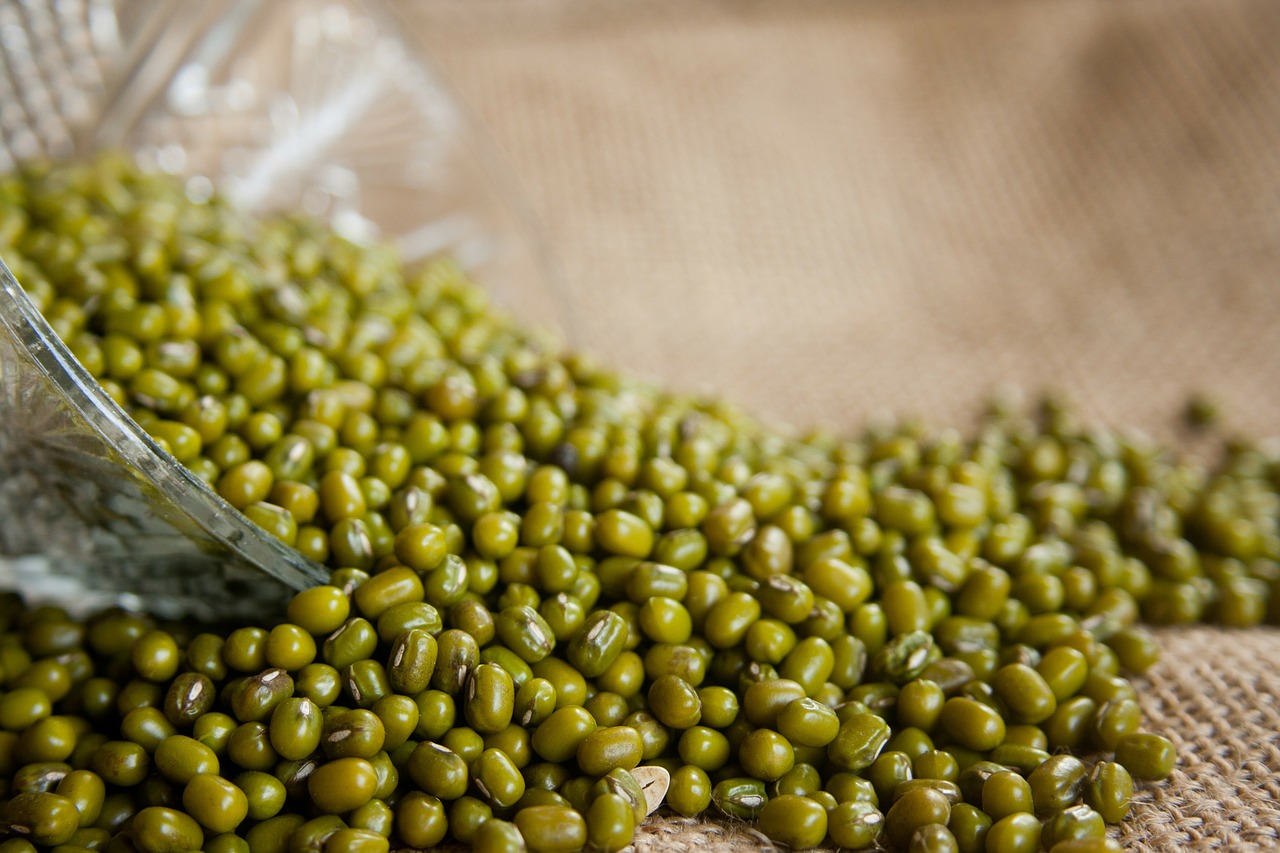
I hope this helps!
If you want some inspiration for recipes with beans, I use them a lot in my cooking – check out my recipe database – click here 🙂
References
[1] Gas – flatulence: MedlinePlus Medical Encyclopedia
[2] National Institute of Diabetes and Digestive and Kidney Diseases. Treatment for gas in the digestive tract. Updated July, 2016.
[4] Symptoms & Causes of Gas in the Digestive Tract | NIDDK (nih.gov)
[5] Beans and other legumes: Cooking tips – Mayo Clinic
[6] Healthy food trends – beans and legumes: MedlinePlus Medical Encyclopedia

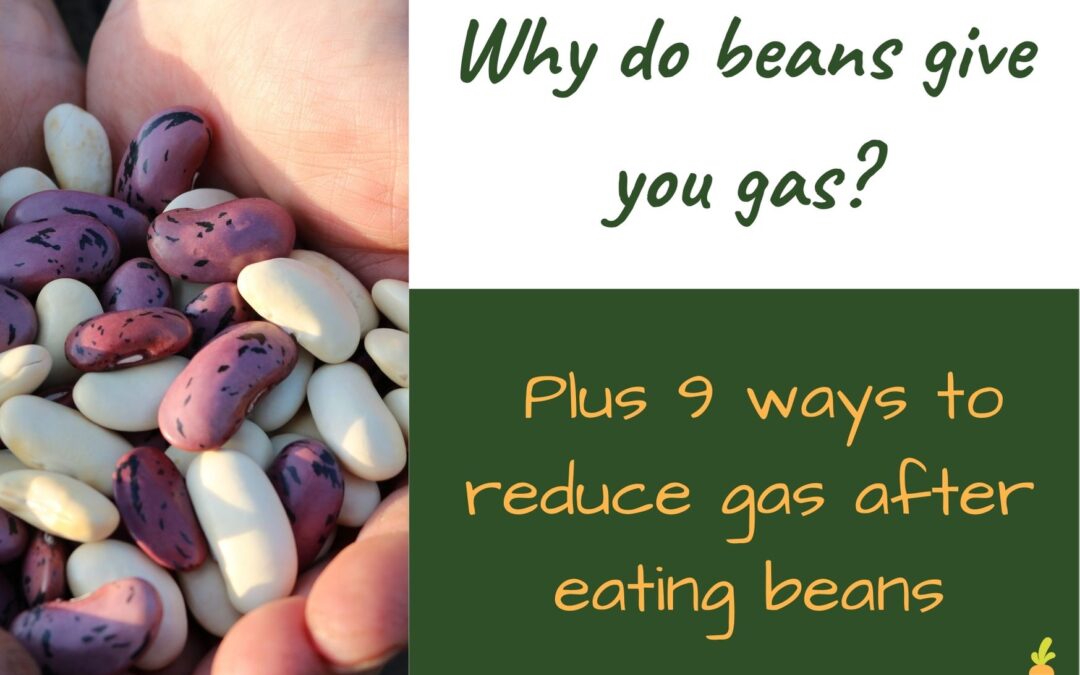
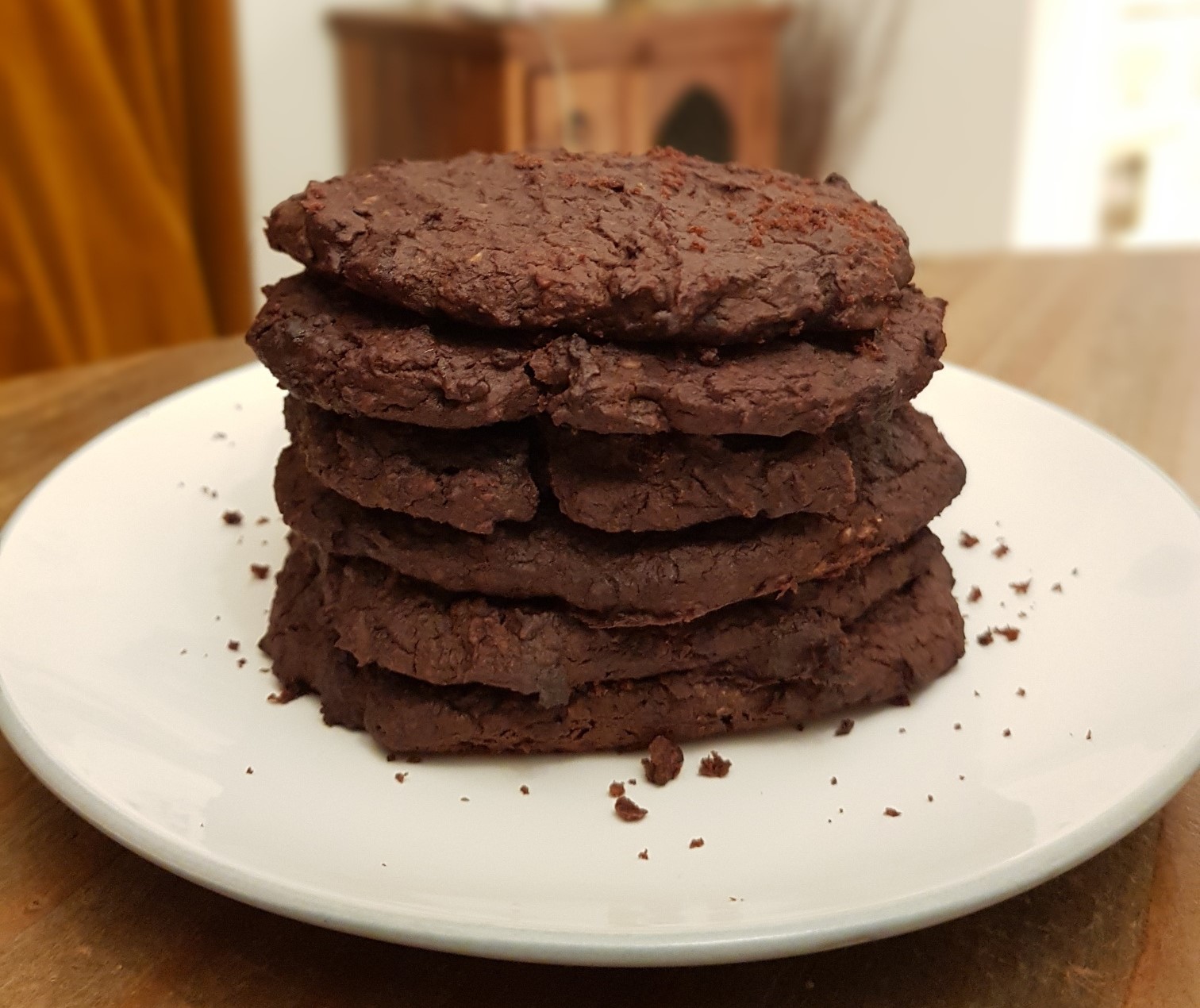
Personally, if all website owners and bloggers made good content as you did, the net will be a lot more useful than ever before.